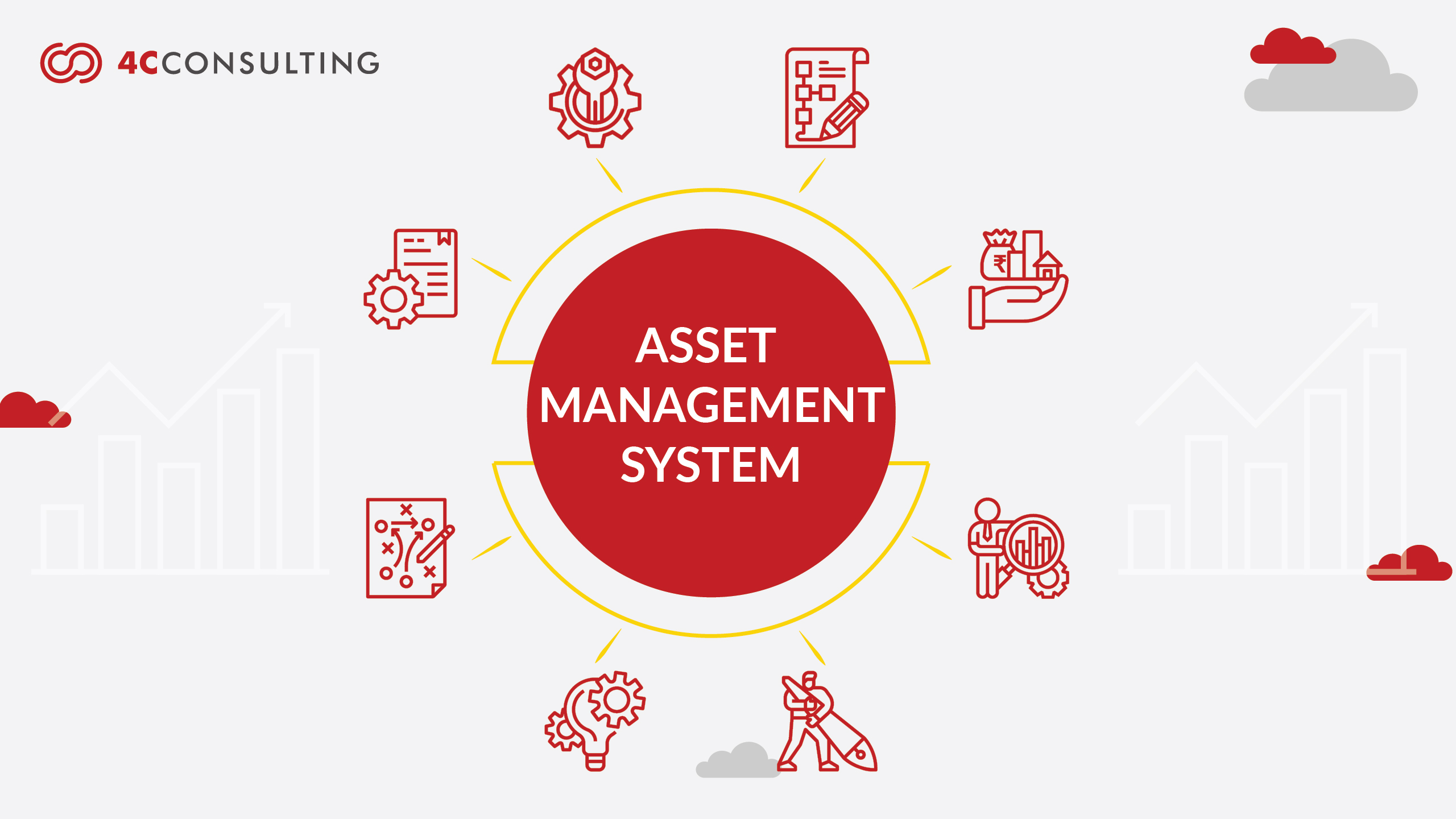
OPTIMIZING ASSET LIFECYCLE COSTS WITH ISO 55001
24th May, 2024
In today’s cost-conscious and performance-driven market, particularly within asset-intensive industries, mastering the principles of lifecycle cost management is essential. Asset lifecycle cost (LCC) encompasses the total cost of owning and operating an asset over its entire lifespan, including acquisition, operation, maintenance, and disposal. ISO 55001:2014 provides a comprehensive framework to help organizations manage these costs effectively. In this blog, we will explore the critical aspects of lifecycle cost management, highlighting how integrating ISO 55001 standards can optimize asset performance and value. By understanding and implementing these strategies, businesses can achieve significant cost savings, enhance operational efficiency, and ensure long-term sustainability.
.
WHAT IS ASSET LIFECYLE COST?
Asset lifecycle cost (LCC) is the total cost of owning and operating an asset over its entire lifespan. It includes acquisition, operation, maintenance, and disposal costs. Understanding and managing these costs allow organizations to make informed decisions that enhance asset performance and value while minimizing unnecessary expenses. Effective LCC management ensures long-term sustainability, optimizing asset utilization and overall efficiency. Integrating ISO 55001 standards with lifecycle cost management provides a structured approach, aligning asset strategies with organizational goals to drive operational excellence and financial performance.
.
OBJECTIVES IN OPTIMIZING LIFECYCLE COSTS
The main goals of optimizing lifecycle costs are to enhance asset management, boost organizational performance, and achieve sustainable results. Key objectives include:
- Enable Strategic Decision-Making: Provide essential data to support strategic decisions in asset management. By identifying patterns and areas of excessive costs or underperformance, organizations can prioritize actions and allocate resources effectively, optimizing asset usage and reducing overall lifecycle costs. This data-driven approach ensures that decisions are backed by accurate and comprehensive information, leading to more effective asset management strategies.
- Ensure Regulatory Compliance: Meet regulatory and environmental standards by establishing consistent methods for monitoring and reporting asset data. This ensures transparency and compliance, helping organizations avoid penalties and reduce costs associated with non-compliance. Regular audits and updates to compliance practices keep the organization in line with changing regulations, mitigating risks associated with legal issues.
- Optimize Operational Processes: Identify and address operational inefficiencies through regular monitoring and analysis. This leads to significant cost savings and productivity improvements, thereby lowering overall lifecycle costs of assets. Streamlining workflows and integrating best practices in operations can further enhance efficiency and reduce waste.
- Cultivate an Asset-Conscious Culture: Raise awareness and involve all levels of the organization in asset management. This proactive approach fosters a culture that supports sustained asset initiatives and continuous improvement in managing lifecycle costs. Engaging employees in asset management processes encourages ownership and accountability, leading to better maintenance and utilization of assets.
- Benchmarking and Goal Setting: Compare asset management performance with industry standards or peers. Benchmarking helps set realistic asset management goals and provides a clear perspective on the organization’s performance relative to others, guiding cost optimization efforts. Regularly reviewing and adjusting these goals ensures they remain relevant and aligned with industry advancements and organizational changes.
- Rationalize Asset Investments: Demonstrate the financial and operational benefits of investments in asset management. By showcasing clear returns on investment, organizations can secure capital for asset management technologies and practices, thus optimizing lifecycle costs. Presenting detailed cost-benefit analyses and success stories can build a strong case for continued investment in asset management initiatives.
ISO 55001:2014, the international standard for asset management, plays a crucial role in achieving these objectives. It provides a structured approach to managing assets throughout their lifecycle, helping organizations implement best practices, make informed decisions, ensure compliance, and improve operational efficiency.
.
HOW TO OPTIMIZE LIFECYCLE COST OF ASSETS?
Optimizing the lifecycle cost of assets involves managing them from acquisition to disposal in a way that maximizes value and minimizes expenses. This process includes considering all costs associated with an asset throughout its life, from initial purchase through operation and maintenance to final disposal. The key stages of an asset’s lifecycle are:
- Acquisition: This includes the initial costs of purchasing or constructing the asset, such as procurement, installation, and commissioning. To reduce costs at this stage, it’s important to conduct thorough market research, negotiate favorable terms, and consider the total cost of ownership rather than just the initial price.
- Operation: These are the costs incurred during the asset’s use, such as energy consumption, labour, and consumables. Optimizing these costs involves implementing energy-efficient practices, properly training staff, and continuously monitoring performance to identify and address inefficiencies.
- Maintenance: This involves the costs of keeping the asset reliable and functional, including both preventive and corrective maintenance. Using effective maintenance strategies like predictive maintenance and condition-based monitoring can reduce downtime and extend the asset’s lifespan, thereby lowering overall costs.
- Disposal: These are the costs associated with decommissioning, removing, and disposing of the asset at the end of its useful life. Planning for disposal should include evaluating potential resale value, recycling options, and environmentally responsible methods to minimize costs and environmental impact.
Effective asset management aims to reduce the total lifecycle cost while maximizing the asset’s value and performance. This requires making informed decisions at each stage, considering factors like reliability, maintainability, and sustainability. A structured approach to managing lifecycle costs, guided by standards such as ISO 55001, can help achieve these goals. This standard provides a framework for asset management that aligns strategies with business objectives, improves risk management, and ensures continuous improvement in asset performance and cost efficiency.
.
STRATEGIES FOR OPTIMIZING LIFECYCLE COSTS
- Lifecycle Planning: Develop strategic plans for each phase of the asset’s lifecycle to optimize costs and performance. This involves analyzing the expected lifecycle and considering factors such as lifespan, usage patterns, and technological advancements.
- Risk Management: Identify and mitigate risks associated with asset failures or underperformance. Implement robust risk management processes to ensure asset reliability and availability, minimizing the impact of unexpected events on performance and costs.
- Cost-Benefit Analysis: Perform thorough cost-benefit analyses for any major investments or upgrades. Assess both the upfront costs and the long-term benefits to ensure that the financial decisions support overall lifecycle cost optimization.
- Energy Efficiency: Focus on improving the energy efficiency of assets to reduce operational costs. Investing in energy-efficient technologies and practices can significantly lower utility expenses and contribute to sustainability goals.
- Performance Monitoring: Use key performance indicators (KPIs) to track the efficiency and effectiveness of assets. Regular monitoring and evaluation help identify areas for improvement, ensuring that assets perform as expected.
- Continuous Improvement: Implement processes for ongoing assessment and enhancement of asset management practices. Regularly review and update asset management plans, policies, and procedures to ensure they remain aligned with organizational goals and industry best practices.
By adopting these strategies and leveraging the ISO 55001 framework, organizations can systematically optimize asset lifecycle costs, enhance asset performance, and achieve sustainable operational excellence.
.
ORGANIZATIONAL BENEFITS OF OPTIMIZING LIFECYCLE COSTS
Implementing strategies to optimize lifecycle costs brings numerous benefits, driving continuous improvement and innovation in asset management. Key benefits include:
- Informed Strategic Decision-Making: Provide vital data that empowers organizations to make informed decisions regarding asset management. This helps identify priority areas for efficiency improvements and investments, optimizing lifecycle costs.
- Compliance and Reporting: Ensure compliance with environmental and regulatory standards. The standard allows organizations to measure adherence to these norms, facilitating comprehensive reporting and transparent communication of sustainability efforts to stakeholders and regulators, thereby reducing compliance-related costs.
- Operational Resilience: Identify potential optimizations and mitigate risks associated with asset performance fluctuations. This resilience is essential for sustaining operations amid external pressures, contributing to lower lifecycle costs.
- Cultural Shift and Employee Involvement: Foster a cultural shift within the organization by raising awareness about asset management and motivating employees to contribute to optimization measures. This involvement can lead to grassroots innovations that further reduce lifecycle costs.
- Market Competitiveness: Gain a competitive edge through cost-efficient operations, crucial in competitive pricing environments. A commitment to sustainability can enhance the company’s reputation, attract environmentally conscious consumers, and potentially reduce lifecycle costs through sustainable practices.
- Strengthened Stakeholder Relationships: Build trust and strengthen ties with stakeholders, including investors, customers, and local communities. Organizations demonstrating tangible advancements in asset management are often seen as more reliable and sustainable, which can lead to better stakeholder support and reduced lifecycle costs.
- Continuous Improvement: Support continual improvement efforts within the organization. Establish benchmarks, track advancements, and identify further enhancement opportunities. This ongoing refinement process allows organizations to progressively reduce asset lifecycle costs and associated operational expenses.
By leveraging ISO 55001, organizations can systematically approach these benefits, ensuring their asset management practices are aligned with international best practices and continuously optimized for cost efficiency and sustainability.
Optimizing asset lifecycle costs with ISO 55001:2014 certification delivers substantial benefits, including reduced costs, enhanced asset performance, and improved risk management. By adhering to this standards organizations can establish a strong asset management framework that meets regulatory requirements and supports long-term sustainability. This approach enables informed decision-making, identifies cost-saving opportunities, and drives continuous improvement. Implementing ISO 55001 fosters an asset-conscious culture, strengthens stakeholder relationships, and ensures alignment with organizational goals, ultimately achieving greater efficiency and financial performance.
.
HOW WE CAN HELP YOU OPTIMIZE ASSET LIFECYCLE COSTS?
At 4C, we specialize in optimizing asset lifecycle costs with a strong emphasis on ISO 55001 standards. Our team of seasoned ISO 55001 consultants and auditors, boasting over 15+ years of experience and 10,000+of hours of training across various sectors, ensures your organization not only meets but exceeds certification requirements. We provide expert consultation, tailored support, thorough audits, and extensive training to help you implement effective asset management practices. By partnering with us, you can enhance your asset management framework, drive continuous improvement, and achieve sustainable operational excellence. Contact us now to learn more.
